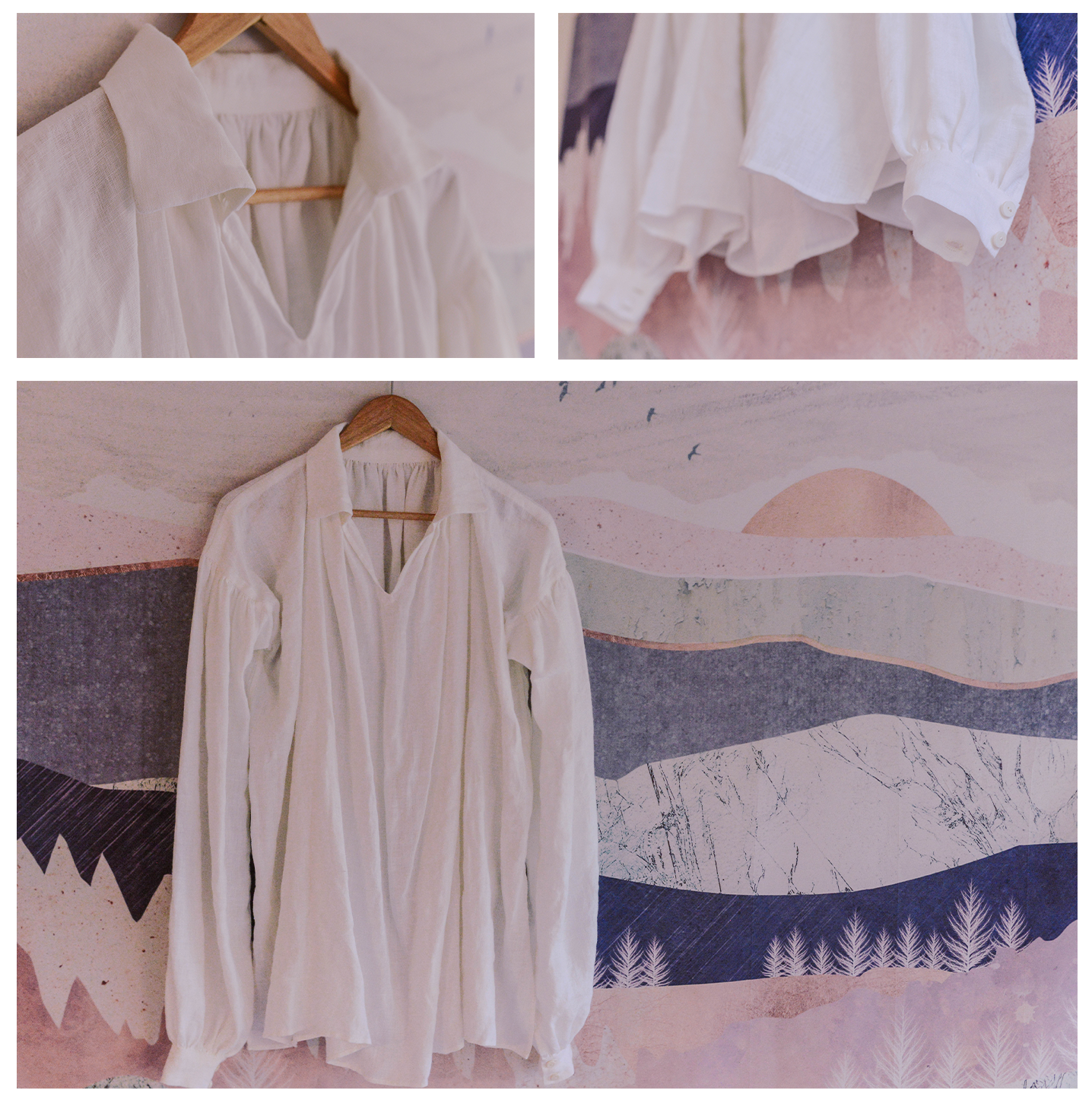

“I was whiling away hours in a listless inability to focus, so I decided to invest that time into something that would grow, even ever so slowly, as I did it. And so, stitch by stitch, a whole pile of slow-fashion dreamy makes has grown and my skills have expanded and somehow that makes it seem like less of a lost year.” In the summer of 2020 as the COVID-19 pandemic surged, Julieta Gomez-Frittelli, a PhD candidate in chemical engineering at Stanford University, felt like time was slipping away from her until she turned to an age-old craft: sewing.
The resulting collection of handmade garments represent Julieta’s own personal style, creativity, and, “Darcy-core regency aesthetic because let’s be real that was a look.” Julieta’s crafted garments range in inspiration but many have roots in her love for literature and sumptuously costumed period tv blockbusters like Gentleman Jack and Murdoch Mysteries. “I’m a huge nerd and many of my choices are lightly inspired by favorite characters to give a secret sort of cosplay-bounding feel.”

When deciding what to craft, Julieta looks for projects that will give her room to grow her skills and be a joy to wear, like her striking hand-sewn pirate shirt whose billowing sleeves would not be out of place in a coffee shop in 2021 or on the deck of Queen Anne’s Revenge in 1716. She also uses upcycling techniques to learn new skills while adding quality pieces to her wardrobe.
“Thrifting and upcycling are great ways to add slightly higher quality pieces to your wardrobe on a budget, and also a way to include pieces that would be a bit outside of your own skill set if you were to try to construct them from scratch,” Julieta explains. She chose a tweed jacket that would become her bespoke waistcoat in part because it reminded her of Claire’s present day wardrobe in Outlander, but also because the structural complexity of a piece like a blazer would be challenging to tailor. “And I was right! The sleeves completely defeated me when trying to take them in and reattach them, but after agonizing over my ‘failure’ for months I made an executive decision to remove them entirely and I couldn’t be happier with the resulting waistcoat!”

For anyone looking to get started in textile arts, Julieta recommends going online for free resources. “Lately I’ve been really loving Bernadette Banner for great historical costuming videos, and Rachel Maksy for that make-it-happen-somehow crafting energy and vintage inspiration. For knitters, the Gentle Knitter podcast is a wonderfully soothing and relaxing retreat every few months, and I’ve enjoyed learning Norwegian knitting techniques with Arne & Carlos as well.” She also recommends starting with something you personally feel inspired by rather than settling for the easiest project because learning is more fun when you love what you’re making.

“I try to choose projects that are challenging but realizable in terms of new skills needed to complete them,” Julieta adds. “There’s a fine line to ride between confidence in one’s current skill set and learning capability, and complete hubris -- ‘I can learn anything!’ -- when it comes to choosing a new challenge. But that’s definitely something I look for when deciding what to do next, because crafting to me is just that, a craft, and a large part of the fun is building and growing my craft as I go. When I print out a new pattern, I go through and highlight all the new things I need to learn while reading the instructions, and check them off my mental checklist as the project progresses (“so far I’ve learned a new cast-on method, and this type of colorwork, and two new increases…”).
Julieta’s unique background has also influenced her work as a textile artist. Prior to beginning her PhD, Julieta worked as a chemical engineer, a discipline which focused heavily on numbers, calculations, equations, and theorems. Today, her biological research focuses on following long, often tedious protocols in a manner that is reproducible in order to obtain interpretable results.
“I think I use both of these frameworks while working with textiles; the engineering mindset to take apart a pattern as I read it and understand how each instruction is supposed to fit together, and the experimentalist mindset of patience and attention to detail through tedious protocols like many thousands of individual stitches in a garment. At the same time, seeing that I am stubborn, patient, and detail-oriented enough to knit a whole sweater, for example, gives me a lot of confidence in my lab work. Three days of work on one experiment? That’s nothing, I spent 100 hours on this one sweater!”
Next up on Julieta’s list is a perfectly tailored, dramatically flowing maxi skirt -- with pockets. Endless usability aside, she’s in it for the details.“I’m here more for the making of things rather than the quick-fix having of things, so I’ll take any reason to make a project take longer!”
In the future, Julieta is looking forward to wearing her hand-crafted garments to get-togethers with all the friends who have supported her through this challenging time and cheered for her finished garment photos. She’s also fondly anticipating the moments out-and-about when someone points to one of her custom-made pieces and asks, “Wow, where did you get that?” so that she can respond with the quintessential crafter’s pride, “I made it!”
